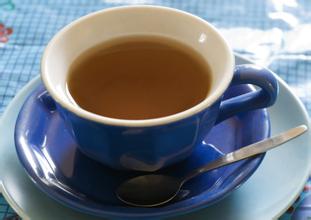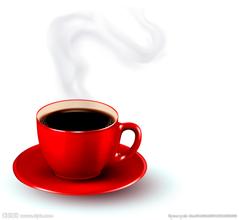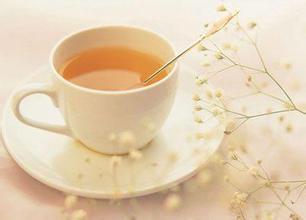Coffee knowledge and literacy
1. The discovery of coffee: many people should have heard the story about the discovery of coffee. Once upon a time, a shepherd named Kaldi in the highlands of Ethiopian found his sheep spinning excitedly because they had eaten the red fruit on a shrub by the side of the road. The shepherd felt very strange and ate a few of them, feeling very excited. At this time, an Arab monk named Aucuba happened to pass by. he had walked a long way, hungry, tired and sleepy. after eating these fruits, he became very awake and sleepy, so he took the fruits back so that he would not fall asleep when he prayed. This is a widely circulated version of the discovery of coffee.
two。 Classification of coffee: coffee, small evergreen trees or shrubs, rubiaceae, long ovate leaves, pointed front, white flowers, berries, crimson, with two semilunar seeds together, and some oval seeds fried into powder, which can be used as a beverage, exciting and cheap stomach, produced in tropical and subtropical regions.
In terms of varieties, there are two main types: Arabica coffee (Coffea Arabica) and Robbite coffee (Coffea Robusta), the former accounting for 70% of the world's total output, the latter 30%. The main difference between the two is that Arabica coffee suffers from "rust" while Robster does not. Arabica coffee is hardy and grows in an area of 15-24 °C, while Robster is 24-29 °C, and the growth requirements are not as strict as the former. For example, it is OK to be below 500 meters above sea level, and the requirement of rainfall is not so strict.
The Jamaican Blue Mountain Coffee and Mocha Coffee that we are familiar with are named from the venue or the port of export, because generally speaking, the quality of the coffee exported from the previous coffee, a place, or a port is relatively consistent. It will be different from that in other places. This can represent the taste and quality of a kind of coffee. In fact, a place of origin can not guarantee the quality of coffee, and there are different varieties of coffee often produced in one place. For example, Cameron produces Arabica coffee and Robster coffee at the same time, but it is traditionally divided in this way. the world-famous coffee we are talking about now usually refers to a certain kind of coffee. Coffee celebrities in this way are:
Jamaican Blue Mountain Coffee (Jamaican BlueMoutain), which can be sold at the most expensive price in the world. The taste is very subtle, the acidity is just right, the taste is fresh and elegant, with a hint of sweetness and excellent mellow, very smooth and refreshing, and an unparalleled aroma. Suitable for medium baking, so that the original flavor can be preserved to a large extent. * is its main consumer.
Hawaiian Kona Coffee (Hawaii Kona) is fresh, crisp, medium-bodied, slightly sour and full-bodied, with a long finish and a blend of wine, fruit and spice aromas. Suitable for light or moderate baking.
Brazil Bourbon Santos (Brazil Bourbon Santos) Brazil is the largest coffee-growing country in the world. Coffee drinking is common, but it is low-grade coffee. Because the altitude of his country is generally low, and it is planted in a large area, manual harvest is difficult to implement, generally mechanical harvest, so ripe and green fruits will be mixed together, affecting the quality. Generally speaking, Brazilian bourbon Santos coffee has no outstanding advantages, but there are no obvious defects. This coffee has a mild and lubricated taste, low acidity, moderate mellow, light sweetness, and is suitable for popular methods. It is the best raw material for making Italian espresso and all kinds of fancy coffee. Suitable for ordinary baking.
Columbia Super Coffee (Columbian Supremo), a unique location, at the foot of the Andes (Andes), mild climate and humid air, no frost, undulating mountains provide a diversified climate and long growth cycle, resulting in its small particles, mellow taste. This coffee is medium mellow, low acidity, sweet, has the best flavor and delightful aroma. Some people say that Colombian super coffee has the strong lubrication characteristic of Sumatra Mantenin, a special walnut bitterness and nutty taste, suitable for medium roasting.
Harald, Ethiopia (Ethiopian Harrar), which has a mixed flavor, has a mellow taste, moderate or mild acidity, and the lowest caffeine content because residents still pick wild coffee, making it the most unusual and special coffee in the world. Its dry treatment gives it a unique earthy smell, and its unique primitive wild flavor is very aggressive. Suitable for shallow baking.
Kenya A.A because it is very similar to Yemeni mocha and Ethiopia, they both have a chic wine taste and a long aftertaste, but it is rare that Kenyan coffee has the mellow and smooth taste that Ethiopian coffee and Yemeni coffee do not have. it is lighter than Ethiopian coffee and more mellow than Yemeni mocha, so it is generally suitable for deep roasting.
Yemeni mocha coffee. One of the oldest coffee in the world, Yemen is at the southernmost tip of the Arabian Peninsula, and Mocha is a port in Yemen where coffee was formerly named. But now the port of Mocha no longer exists and has become a sandbar. The mocha coffee we are talking about now generally refers to coffee of similar quality, which has lost the meaning that he began to name. Nowadays, coffee in Arabian Peninsula is called mocha coffee, and sometimes Harald coffee produced in Ethiopia is also called mocha. It is characterized by fruity, obvious wine, spicy and nutty flavors. Some people also commented that the aftertaste of mocha is very similar to that of blueberries, with a strong sour taste and obvious chocolate flavor, which is suitable for deep baking, and it is said that it is best to grind and brew after baking for a day or two.
Unlike Central American coffee Sumatra Mandheling, which is dry and long, it is characterized by mellow taste, mild acidity and long-lasting flavor. Although not as mellow as the fresh vanilla wine of African coffee beans, Indonesian coffee beans are known as "sweet herbal flavors" and are suitable for medium roasting.
What is said above is from the classification of coffee beans, what we hear every day is the name of fancy coffee. Here are some common coffees.
Italian espresso (Espresso), coffee is very strong, made from long-roasted coffee beans, usually requires 7 grams of coffee powder and 40-65 milliliters of water. This is the "raw material" for making a lot of fancy coffee.
Cappuccino: half a cup of Espresso and half a cup of foamy milk. Sprinkle the milk with cocoa or cinnamon powder to decorate or prevent the milk from peeling.
Latte (Latte) is not so much coffee as milk. Latte is also Espresso coffee made with milk, but contains more milk than cappuccino.
Cafe AuLait can be thought of as an European latte, unlike American and Italian lattes. The point is that when making, a cup of Espresso and a cup of hot milk are poured into a large cup at the same time. The milk and coffee meet at the first time and give off a unique flavor, and finally put two tablespoons of foamed cream on the surface of the liquid.
Mocha coffee (Mocha) because the Yemeni mocha coffee has chocolate flavor, so the Italian Espresso coffee added chocolate is called mocha coffee. One-third of espresso, one-third of hot chocolate and one-third of hot milk are poured into the Mugs in turn.
Congerado Coffee (Cafe Con Gelato) is Espresso with ice cream.
Irish coffee (Irish Coffee), granulated sugar, Irish Whiskey and black coffee are poured into wine glasses sequentially.
Viennese coffee (Viennese Coffee), a bit like American mocha, is made by sprinkling a thin layer of sugar on the bottom of the cup, then pouring in the hot and strong coffee, and finally adding two tablespoons of cold fresh cream.
Mediterranean Coffee (Mediterranean Coffee), a mixture of coffee, chocolate, and various spices.
Royal coffee (Cafe Royal), this kind of coffee is very interesting. First put a cube sugar in a small heat-resistant bowl, then pour in the brandy, wait a few minutes, when the brandy is basically absorbed by the cube sugar, light the cube sugar, after burning for a minute, the white cube sugar will melt into brown sugar dilute, when the flame is out, add the sugar dilute to the coffee while hot, decorate the surface of the coffee with electric cream, okay, a cup of royal coffee.
Russian coffee (Russian Coffee), first break an egg yolk into a pan, then add chocolate, a small amount of milk, melt, pour in a small cup of Codka, finally add a tablespoon of sugar, mix well. Then add the prepared hot espresso and garnish with cream and chocolate crumbs.
3. Coffee production: the process of making coffee basically includes picking, drying, roasting, grinding and cooking.
There are two kinds of picking, manual and mechanical, because the maturity of handmade coffee beans is uniform, and there is no mildew, and so on, so high-quality coffee beans basically use this method.
There are also two kinds of drying, sun drying and washing. Coffee beans are wrapped in peel, pulp and a thin film called silver skin. Sun-drying is the most economical, simple and oldest method, which is dried in the sun and then peeled off the pulp and silver on the sheller. The disadvantage of this method is that the coffee will stick to the smell of soil. But the flavor can be well preserved. However, with the development of science and technology, we have begun to use dryers to dry coffee fruits.
The biggest difference between washing and drying is that the peel and pulp of the fruit are removed, the coffee fruit is placed in a huge tank, the ripe fruit sinks to the bottom and separated from the floating immature, and then the fruit is crushed by machine. The coffee beans are fermented to remove the slimy fruit oars from the silver skin, and then dried, but the silver skin is also included at this time. When it is exported, the silver skin is removed by a peeling machine, which can retain the original flavor of the beans. This method is usually used for high-quality Arabik.
Baking is divided into shallow, medium, deep and extra-deep baking. Generally speaking, the lighter the sour taste, the stronger the sour taste, the deeper the coffee, the more bitter the coffee is, and the darker the color is, the bitterness is very obvious when it is roasted very deep, and there is a light smell of soot.

Important Notice :
前街咖啡 FrontStreet Coffee has moved to new addredd:
FrontStreet Coffee Address: 315,Donghua East Road,GuangZhou
Tel:020 38364473
- Prev

Detailed explanation of nine kinds of common coffee
As people learn more about Western food and culture, many people choose to spend the afternoon with a few friends in a coffee shop, but when ordering, they don't understand the meaning behind the name of coffee, such as the difference between latte and mocha. Today, the editor would like to take this opportunity to briefly introduce some of our common coffees in coffee shops. I know the knowledge of coffee in my heart.
- Next

80% of Koreans drink more than 2 cups of coffee a day. It is popular to brew coffee at home.
Chinanews.com, Jan. 20-according to South Korean media reports, the "Korean Coffee White Paper" released by Seoul Coffee Show, South Korea's largest coffee fair, showed that 76% of Koreans drink more than two cups of coffee a day on average, and 7 out of every 10 Koreans make coffee at home. The Seoul Coffee Show is aimed at 1076 business people and audiences who participated in the Seoul Coffee Show and the World Coffee leaders Forum last year.
Related
- Beginners will see the "Coffee pull flower" guide!
- What is the difference between ice blog purified milk and ordinary milk coffee?
- Why is the Philippines the largest producer of crops in Liberia?
- For coffee extraction, should the fine powder be retained?
- How does extracted espresso fill pressed powder? How much strength does it take to press the powder?
- How to make jasmine cold extract coffee? Is the jasmine + latte good?
- Will this little toy really make the coffee taste better? How does Lily Drip affect coffee extraction?
- Will the action of slapping the filter cup also affect coffee extraction?
- What's the difference between powder-to-water ratio and powder-to-liquid ratio?
- What is the Ethiopian local species? What does it have to do with Heirloom native species?

